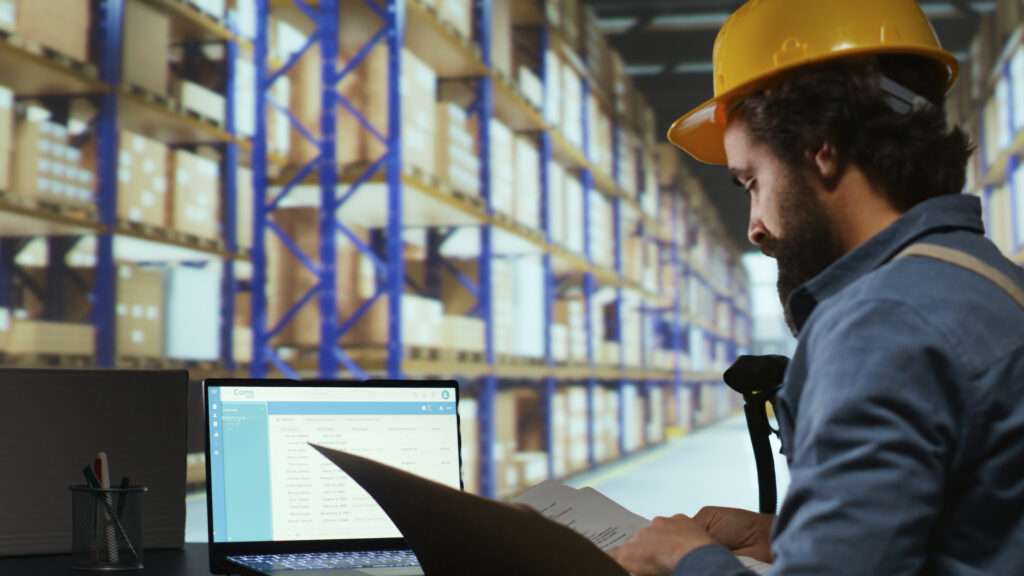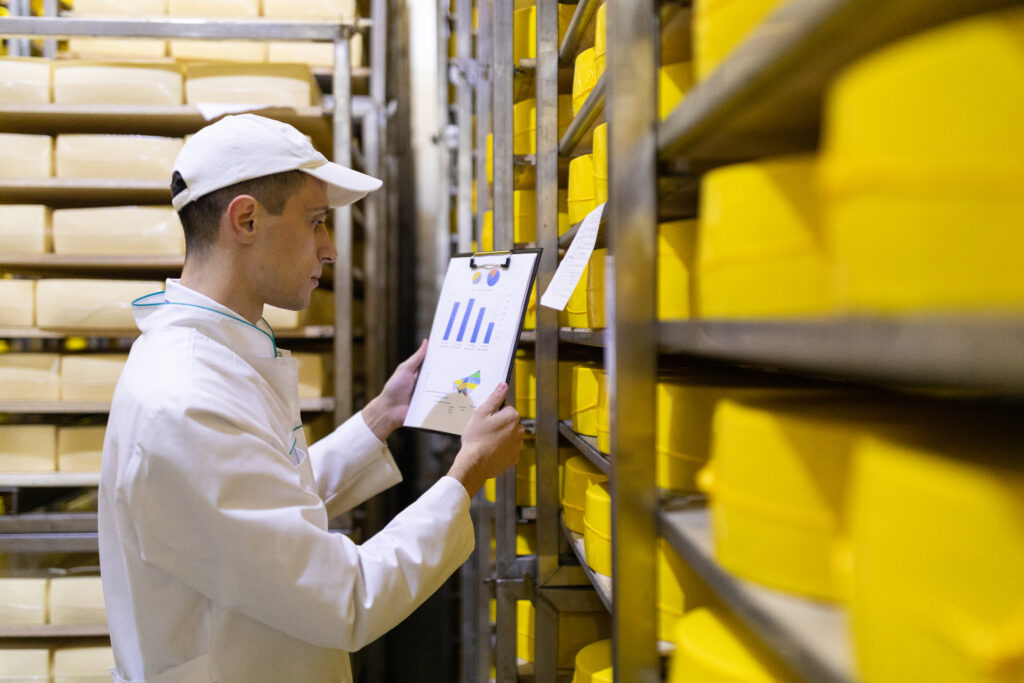When Data Becomes a Competitive Weapon
In today’s volatile markets, the effective use of AI and IoT in supply chains is no longer a luxury, it’s a competitive weapon. Information is the most valuable raw material, yet most companies fail to use it. Every container and assembly line generates data, but few use it for critical decision-making.
Modern supply chains demand a transformation from reactive control to proactive intelligence. Artificial Intelligence (AI) and the Internet of Things (IoT) are at the center of this supply chain transformation. Together, they promise predictive visibility, autonomous optimization, and data-driven resilience.
For an engineering and product development company like MECHESOL, integrating AI and IoT in supply chains is the technological backbone that defines the future of sourcing, logistics, and manufacturing efficiency.

1. The Data Problem in Traditional Supply Chains
Traditional supply chains operate on fragmented systems. ERP in one corner, logistics tracking in another, supplier communication in a third. This fragmentation creates data silos, leading to:
- Delayed supply chain visibility on shipment or supplier issues
- Inaccurate forecasting due to stale or missing data
- Manual firefighting instead of predictive action
A 2024 Gartner report shows that 72% of supply chain leaders admit poor data quality as their biggest barrier to digital transformation.
AI and IoT in supply chains provide a unified way to connect physical assets and digital intelligence, enabling real-time decision-making.
2. How AI and IoT Transform Each Supply Chain Stage
a) Procurement and Sourcing
AI-driven algorithms can evaluate supplier reliability, predict risks (financial, geopolitical, compliance), and dynamically re-rank sourcing options.
- Predictive Supplier Scoring: Combines delivery history, quality, and ESG compliance data.
- Autonomous Negotiation: AI chatbots already perform low-value contract renegotiations in pilot programs.
b) Manufacturing and Operations
This is a core area for AI and IoT in supply chains. IoT sensors embedded in machines monitor temperature, vibration, and tool wear. When paired with machine learning, they enable predictive maintenance, forecasting breakdowns before they occur and reducing downtime by up to 40%.
- Predictive maintenance using anomaly detection
- Process optimization through edge analytics
- Adaptive scheduling based on sensor feedback

c) Logistics and Transportation
AI optimizes freight routes dynamically, factoring in weather, congestion, and fuel costs. IoT provides live shipment tracking for complete supply chain visibility.
- Smart routing algorithms reduce empty miles
- Predictive ETA (Estimated Time of Arrival) accuracy improved by 60–70%
- Temperature sensors maintain cold-chain integrity
d) Warehousing and Distribution
Smart warehouses now use AI vision systems for inventory counting, and IoT RFID systems for automatic tracking.
Combined, they minimize errors, detect theft, and automate replenishment.
3. Building the Data Infrastructure
AI and IoT cannot succeed without a robust data pipeline. The journey from raw sensor readings to actionable insights follows a structured technical stack:
| Layer | Function | Example Technologies |
| Perception Layer | Data capture via IoT sensors and devices | RFID, temperature & pressure sensors, barcode scanners |
| Network Layer | Communication & connectivity | 5G, LoRaWAN, MQTT, NB-IoT |
| Data Layer | Collection, storage, and cleaning | Cloud (AWS, Azure), Data Lakes, Kafka |
| AI & Analytics Layer | Processing, prediction, and pattern detection | TensorFlow, PyTorch, Spark ML |
| Application Layer | Visualization, dashboards, decision support | Power BI, Grafana, custom MECHESOL dashboards |
To make this system effective, MECHESOL engineers integrate Edge Computing, where devices perform early analytics before sending summaries to the cloud. This reduces latency and network load, crucial in fast logistics and production environments.

4. Integration Challenges and How to Overcome Them
While AI and IoT in supply chains promise efficiency, integration is difficult. Here are real-world challenges our teams at MECHESOL solve for clients:
| Challenge | Description | MECHESOL Solution |
| Data Fragmentation | Disparate data sources (ERP, WMS, TMS) | Data orchestration pipelines and unified dashboards |
| Sensor Reliability | Inaccurate or missing IoT data | Sensor redundancy + real-time calibration |
| Security and Privacy | Networked devices vulnerable to attacks | Encrypted MQTT, zero-trust network architecture |
| Scalability | AI models need constant retraining | MLOps pipeline to automate model deployment and retraining |
| Skill Gap | Lack of cross-domain expertise | Joint taskforces: data scientists + industrial engineers |
5. Case Study: Predictive Freight Optimization for a Global OEM
A European automotive OEM partnered with MECHESOL to reduce logistics inefficiencies.
Problem:
High demurrage costs and delays in containerized shipments.
Solution:
- Installed IoT trackers on containers (temperature, location, shock)
- Developed AI models to predict port delays and weather disruptions
- Integrated a digital twin to simulate route alternatives
Results:
- 24% reduction in overall logistics cost
- 37% faster container turnaround time
- Predictive visibility extended to Tier-2 suppliers
This supply chain transformation proves that AI and IoT deliver tangible business outcomes.

6. How to Measure AI and IoT Success (KPIs)
Technical transformations need clear performance indicators.
| KPI | Definition | Benchmark |
| Forecast Accuracy | Difference between AI forecast vs. actual demand | >85% desirable |
| Downtime Reduction | % reduction in machine downtime | 30–40% achievable |
| OTIF (On-Time In-Full) | % of orders delivered as promised | >95% best-in-class |
| Asset Utilization Rate | Time assets remain productive | +20% increase post IoT integration |
| Data Latency | Time delay from sensor reading to dashboard insight | <5 seconds ideal |
When these metrics improve consistently, the system transitions from data collection to decision intelligence.
7. The Future: Autonomous Supply Chains
The next evolution for AI and IoT in supply chains is self-optimization. AI agents will autonomously predict disruptions, reroute shipments, negotiate supplier pricing, and adjust production schedules.
AI agents will autonomously:
Imagine a network where every asset talks, every process learns, and every decision is optimized in real-time. That is the vision MECHESOL engineers are building.
Conclusion: Turning Information into Impact
In the modern economy, data is the new currency. AI and IoT integration are the foundation for supply chain agility, precision, and sustainability.
MECHESOL’s teams design intelligent ecosystems where hardware meets data, and operations evolve into predictive networks.
Let’s turn ideas into impact with the right strategy behind them.
For product development solutions:
📩 services@mechesolco.com
Build your entrepreneurial mindset with MESP:
📩 mesp@mechesolco.com
🌐 Explore more at www.mechesolco.com



